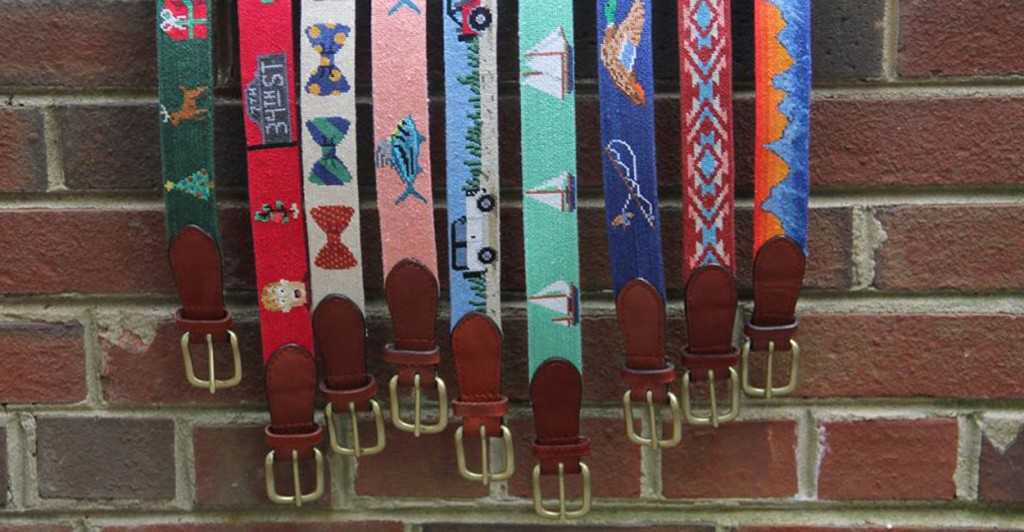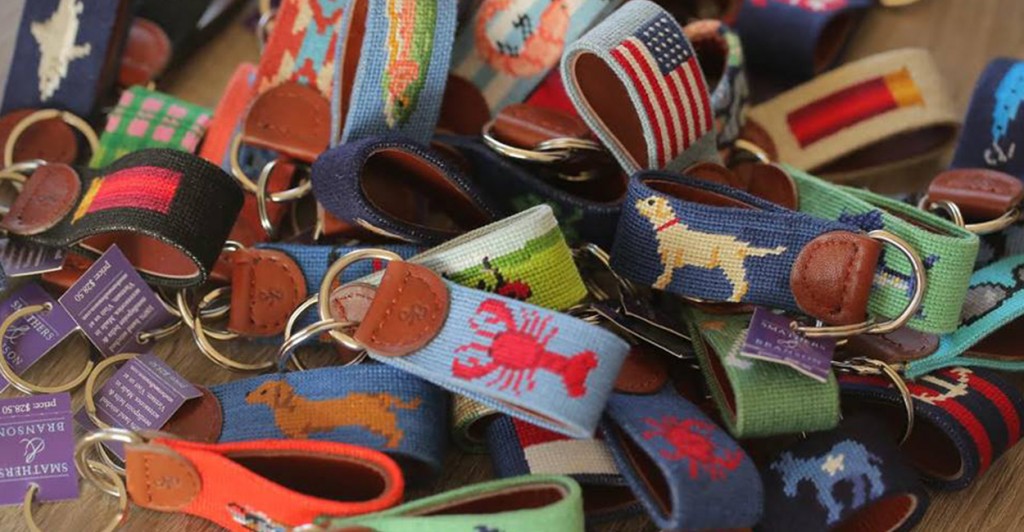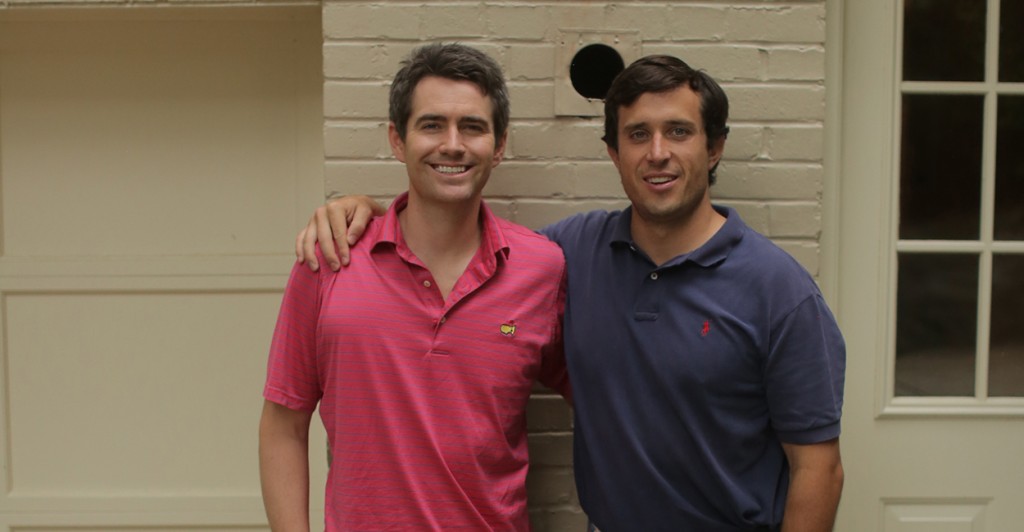In November 2004, Austin Branson and Peter Carter found themselves nervously standing in the lobby of a hotel in Hanoi, Vietnam, waiting.
The 22-year-olds, who met years earlier at Bowdoin College, had convinced their parents to gift them enough miles for their airline tickets for Christmas, and were decked out in their nicest, most “businesslike” blue blazers. They had a meeting with a Vietnamese man named Quang who they hoped would become their manufacturing partner.
“We thought we had to look older for our meetings,” Carter recalls, adding that they did not exactly anticipate the sweltering heat of Vietnamese summers.
“Our partner wound up walking past us a couple times,” Carter says of the man they had been introduced to through a loose connection and only communicated with via email up until that point. “Turns out, he thought we were a middle-aged married couple, and that Austin was my wife.”
Today, not only is Quang their business partner, but he also oversees a fleet of up to 5,000 Vietnamese needlepointing experts who craft elephants, martinis, college logos and the like onto Smathers & Branson products from their small rice village.
As for Branson and Carter, their namesake line of belts, wallets, key fobs and other accessories (the “Smathers” is drawn from Carter’s middle name) is now found in roughly 1,800 locations nationwide. They boast an average growth rate of 67 percent year over year, while Presidents George H.W. Bush, Bill Clinton and George W. Bush have all been spotted in their American flag belt. And this year, they debuted a collaboration with that small purveyor of all things prep, J.Crew.
“Everyone told us we were crazy. Everyone told us it was a terrible idea,” Branson says. “But we wouldn’t have started it if we didn’t really think it had legs. Ten years later, we still think it can grow well beyond where it is now. And right or wrong, that’s the optimistic outlook that entrepreneurs should have: that it’s going to work.”

Smathers and Branson’s signature belt has helped the retailer become a near-household name. (Photo: Smathers and Branson/Facebook)
With Might and Maine
Branson and Carter first met as undergraduates at Bowdoin College in Brunswick, Maine. Hailing from South Carolina and Maryland, respectively, they found the campus a supportive environment for entrepreneurial young men and women.
“We were certainly very enamored by [the idea of running a business],” Branson says. “We spent a lot of late nights talking about business ideas. Of our 10 or so best friends from college, eight probably have been entrepreneurs, and I think another six probably currently still are running businesses.”
Asked why the pursuit was so popular, Branson muses it was a result of either encouragement or stupidity. He does cite witnessing the growth of Vineyard Vines, a preppy retail company launched by brothers Shep and Ian Murray, as highly influential. As Carter explains, the brothers were the first to succeed in the space and “planted a seed that let us know that something like that was possible.”
The idea for a needlepoint belt company, which Branson and Carter admit comes across as incredibly niche, struck during their junior year.
Branson and Carter both happened to be dating young women who serendipitously both gifted them with hand-stitched belts they had made. Maisie Lynch, the young woman who crafted Branson’s belt, married him in 2008.
The duo was overwhelmed by compliments from friends and students wondering where they could purchase their own belts. At the time, one belt, by Branson’s estimation, required hundreds of dollars of materials and days to stitch.
“It was never really available. You had to have someone make one for you, so to some extent it was creating an untapped market,” Branson says. “The idea was to start our own company that sold the finished product.”
In 2003, as seniors, Branson, Carter and their still half-baked idea found an unlikely mentor in Bowdoin’s then-President Barry Mills, who took a meeting with the eager young men and remains a Smathers & Branson fan to this day, playing in a game of golf with Carter just this week.
Mills introduced the boys to invaluable contacts like Matt Rubel, who was formerly CEO of both Cole Haan and Payless Shoes. He also helped them establish an independent study during their senior spring semester where one business and one design professor advised them on strategy and product development.
They meticulously studied the space to understand the hurdles they were up against and resolved to begin their business just after graduation, and a summer spent saving up money teaching tennis lessons. Luckily, as Carter points out—citing statistics of how many business partnerships break apart due to distrust or clashing personalities—their business relationship was as balanced and productive as their friendship had been.
“President Mills took a bunch of meetings with us,” Carter says. “That is not the responsibility of a college president, but he was an important part of [our development]. That piece of time at Bowdoin, when we were able to do this kind of on school time, gave us a huge head start.”
Living Modestly, Working Tirelessly
In the fall of 2004, after graduating and pooling savings, Branson and Carter moved into Branson’s parents’ house in Maryland and settled on a company name, forming an LLC and contacting Quang.
They worked to get their designs just right, and they placed their first order—very careful to not overspend or over-order, an ethos the company retains to this day. They lived modestly and worked tirelessly.
“We say we never borrowed money [for the business] or anything like that, but we were also lucky enough to have Mrs. Branson cook us dinner for a year and a half,” Carter recalls. “We didn’t have to pay for food, they probably paid the Internet bill, and we had a free place to live. Support is almost as good as money in some ways, if you know what I mean.”
The boys also had the help of Bob Branson, who, despite not being an entrepreneur per se, had managed his own accounting firm and knew the ins and outs of launching a business from the ground up. Carter’s parents also hosted the two in South Carolina while they traveled to expos.
The first batch of belts arrived in 2005, and the traveling salesmen were off, operating out of the back of Carter’s Jeep and traveling up and down the East Coast. Their first few vendors were specialty stores in Washington, D.C.’s Georgetown neighborhood and in Charleston, S.C. Their business grew almost entirely by in-person meetings and word of mouth, but not without hiccups.
“From day one, with all the production issues, getting the quality to where it needed to be, I mean we’ve had all sorts of setbacks,” Branson says. “My dad always jokes that he saw so many times he thought it was over, and we’d figure out a way to work around it and get through. The simple answer [to our success] is finding the resolve to keep going as things go wrong.”
They grew slowly and eventually found companies calling, asking for appointments to see the product. Over the years, fortuitous and unsolicited mentions and product placements (one in The New York Times, another on Bravo) helped.
“We can only grow as fast as we stitch,” Branson says. “We pick a new product, we pick a couple new things we want to do … but they’re incremental rather than revolutionary, year by year.”
In 2006, a then-19-year-old intern named Chris Piper answered Smathers & Branson’s office line and fielded a request from a store in New York he had never heard of named “Brockton and Goodman.” He politely told them he was sorry, but they were extremely busy, and yes, Austin and Peter would try to squeeze them in while in New York if they could find the time.
It turned out to be luxury titan Bergdorf Goodman.
“I hung up the phone and Peter and Austin asked me, ‘Who was that?’” Piper, who is now the company’s director of Wholesale, says with a laugh. “I said, ‘Oh, it was someone who has a stores in New York I think called Brockton Goodman. Their eyes lit up and they said, ‘Do you mean Bergdorf Goodman?’ I still had no idea what Bergdorf Goodman was, but I quickly Googled it and realized they were a big player. It’s been a running joke since.”
Despite—or potentially because of—the mix-up, Bergdorf’s did business with Smathers for five years, opening up new customers and markets to the brand.
‘Stick to What You’re Good At’
Today, Branson and Carter employ roughly 30 people in their office in suburban Maryland, where Branson’s very large, very furry Goldendoodle named Moose stands guard. A long way from their days cold-calling retailers, they now find themselves playing the role of seasoned vet at expos and trade shows, which they say are filled with a new generation of 20-somethings eager to prove themselves.
“We went through our twenties in this business, and are becoming adults in this business,” Carter says.
Asked what advice he’d offer up to newcomers, Branson remains pragmatic, citing hard work, luck and an honest assessment of strengths and weaknesses.
“Every business needs a little bit of luck to survive. We believe the hard work we’ve put in since day one has helped earn us a lot of the luck that we’ve needed to make it for ten years,” he says, adding that he encourages other entrepreneurs to “stick to what you’re good at.”
“We have a good track record, but if we stretch too much outside of our niche, we may end up damaging the core of the business that we worked so hard to build,” he says.
Last year, after 10 years of sharing a desk with Branson, Carter moved to California—not out of any grand business strategy, but to be closer to his new wife’s family. Happily, he says, it’s forced the duo to become even more focused as they rely heavily on very regimented schedules to coordinate calls.
They have developed partnerships with Pottery Barn, Brooks Brothers and, most recently, the aforementioned collaboration with J.Crew, which features a belt, a key fob and a card holder. “It’s nice to be called on by small brands and obviously big companies,” Branson says.
Despite big-name success, they maintain that their bread and butter is specialty stores, colleges, yacht clubs, golf courses and the like. They take pride in the fact that their product, heritage-driven, is, in their eyes, timeless.

Smathers and Branson have expanded their product line to include key fobs, hats, pillows, wallets and more. (Photo: Smathers and Branson/Facebook)
It’s clear their optimism has not wilted despite years gone by and shifting realities. “We recognized that we had very little to lose when we were in college,” Branson says. “We didn’t have wives or mortgages or anything.”
Ask the duo where they think they are in terms of long-term expansion, and they’ll insist they’re just getting started.
“We have a lot in the pipeline that we want to do,” Branson says. “We have the sort of confidence that either we will have screwed up or something will have changed with the global economy if we’re not able to double, triple, really grow from where we are now. We look at ourselves and still think we’re just getting going.”



































